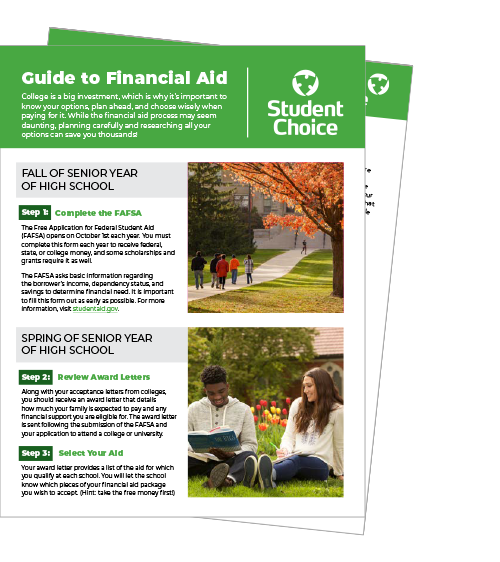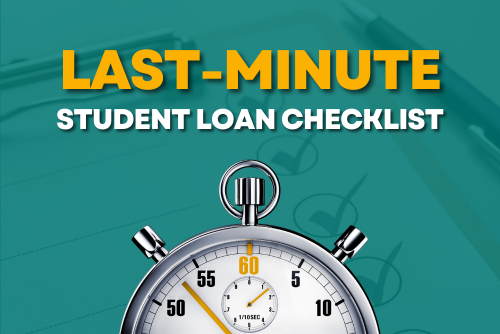Education Line of Credit Built for Convenience
What Borrowers Are Saying
Don’t just take our word for it.
The process was quick and easy. I was approved for a maximum amount that I can have easy access to if I ever need to get more money for school tuition instead of having to submit an application every time.
I have enjoyed the flexibility and ease of this private student lending. It was the perfect option for me and I am very glad that it was recommended to me.
I feel the credit union’s private student lending program is a fit for most people’s needs. I would recommend it to most anyone.
The application process was very easy and all of the staff members were helpful, kind, and professional.
This should be any USC student/parent’s first choice when seeking a private education loan.
I have had a great experience with the credit union for both of my daughters’ student loans. Everything is easy to do online and whenever I have to call with a question, I always get top notch customer service.
Compared to the loan my son got from another lender, this was much faster and easier.
The simplicity of requesting a line of credit to be used is so much simpler than having to reapply every year for another loan.
While speaking to a loan officer we were given lots of great information so we could make informed decisions.
The application process was quick and easy. When we called with questions they were answered quickly. The entire process was extremely efficient.
Frequently Asked Questions
Information you’ll need to successfully complete the application:
- Personal information (such as name, date of birth, Social Security number)
- Sufficient income information for either the borrower or co-applicant (if applicable)
- School enrollment information, if known
- Amount needed for your current school term
- If applying with a co-applicant, you’ll want to have them present. The co-applicant will also need to provide the same type of personal information as the student borrower. If they cannot be present, you should have their primary email address on hand – we’ll send them a notification to input their information.
Processing times vary based on time of year, document submission, and the school’s own certification process. In general, you can expect the process to take anywhere from 5-45 days, depending on the documentation available.
Our private student loans can be used for any items listed in your school’s cost of attendance, or other education-related expenses. The amount you are eligible to borrow will be certified by your school, and the funds are sent directly to your college.
If some of the loan will be used to cover items not directly paid through the school, such as books, off campus rent, or a laptop, the school will issue you a refund for the excess amount.
You may choose to make interest-only payments while in school; defer both principal and interest payments until six months after graduation; or make full payments while in school. If you defer both principal and interest payments during school, interest begins accruing at disbursement and will be capitalized when you enter repayment.
The Department of Education clarifies that the term “Stafford Loan” refers to a subsidized or unsubsidized Federal Stafford Loan made to students on or prior to July 1, 2010. However, many people and schools also informally use “Stafford Loans” or “Direct Stafford Loans” to refer to both direct subsidized and unsubsidized student loans made via the William D. Ford Federal Direct Loan (Direct Loan) Program. When a school says they offer “Stafford Loans”, this means they offer Direct Subsidized Loans and Direct Unsubsidized Loans. Read the full article on the Federal Student Aid website.
Yes. You must be continually enrolled in a degree-granting program and meet your school’s minimum Satisfactory Academic Progress (SAP) criteria to be eligible. For fall and spring terms, you must be enrolled at least half-time. For summer term, you may be enrolled less than half-time. Should you drop below half-time in the fall or spring, withdraw during any term, or fail to meet SAP requirements, your funding request can be denied, your line of credit may close, and you may enter repayment.
Graduated Repayment is repayment of principal and interest using an extended amortization period intended to lower the monthly payment amount, after which payments are higher and based on the remainder of original term.
University Accounting Service (UAS) will service your loan. Once your loan has been disbursed or entered repayment, you may contact UAS with questions, or access your account online.
The maximum amount you can borrow varies by credit union lender. In general, the amount is based on your school’s certified costs minus the amount of other financial aid you have already received (such as federal student aid, scholarships, and grants). You can view loan limits on our lenders’ websites or within your results from our matching tool.
Many of our credit union lenders offer a cosigner release option based on on-time payment history and other requirements. We recommend reviewing specific criteria on the credit union lender’s website.
Many of our credit union lenders offer a 0.25% interest rate reduction when the borrower signs up for automatic debit payments and is in active repayment. We recommend reviewing the credit union lender’s website for details about a potential discount for automatic payments.
Fixed Interest Rate
A fixed rate loan is exactly as it sounds – the interest rate is fixed, or stays the same, for the entire life of your loan.
Pros: You’ll know what your interest rate is and won’t have to worry about fluctuations down the road.
Cons: The tradeoff for knowing what your rate will be for the long haul is that it is often a higher rate to start than a variable rate option.
Variable Interest Rate
When you select a variable rate loan, your interest rate will fluctuate over time based on the current index rate. Your lender adds a percentage to that base according to your credit score and history, and there is usually a limit or “ceiling rate” on how high your rate can go if the index increases.
Pros: Variable rate options are typically lower than fixed rate at the start of your loan. Additionally, if the index decreases in the future, so will your interest rate.
Cons: There is risk involved; while your rate could go down, it could also increase, meaning you will pay more in interest over time.
With our undergraduate and graduate line of credit products, you will only have to complete the application process once. However, your loan is subject to annual review and credit qualification, and you must continue to meet your school’s Satisfactory Academic Progress (SAP) and enrollment requirements.
You do not need to be a member to start the application, but you will need to be a member of the credit union before you can receive funding.
A borrower is not required to apply with a co-applicant. However, applying with a credit worthy co-applicant may improve a borrower’s chance of meeting the credit union’s approval criteria and potentially qualify for a lower interest rate.
Using the free student loan payment calculator does not constitute an offer to receive a loan and will not solicit a loan offer. Any payments and savings will depend on the actual amounts for which you are approved, should you choose to apply. This calculator is provided for educational purposes only and should not be relied upon as financial advice. Always consult your credit union or financial advisor when making your decision.
* APR = Annual Percentage Rate. For Private Student Loans: Rates shown include a 0.25% rate discount available during full repayment of principal and interest by electing to make automatic electronic payments.** For Student Loan Refinance: Rates shown include a 0.25% discount for optional enrollment in automatic electronic payments.** Variable rates subject to increase after consummation. Rates vary by credit union and depend on credit union membership eligibility. Please use our search tool to find the lowest rate for which you may be eligible.
** The APR will not fall below the floor rate regardless of the index or any additional rate discount.
◊ Subject to annual review and credit qualification. Must meet school’s Satisfactory Academic Progress (SAP) requirements.







